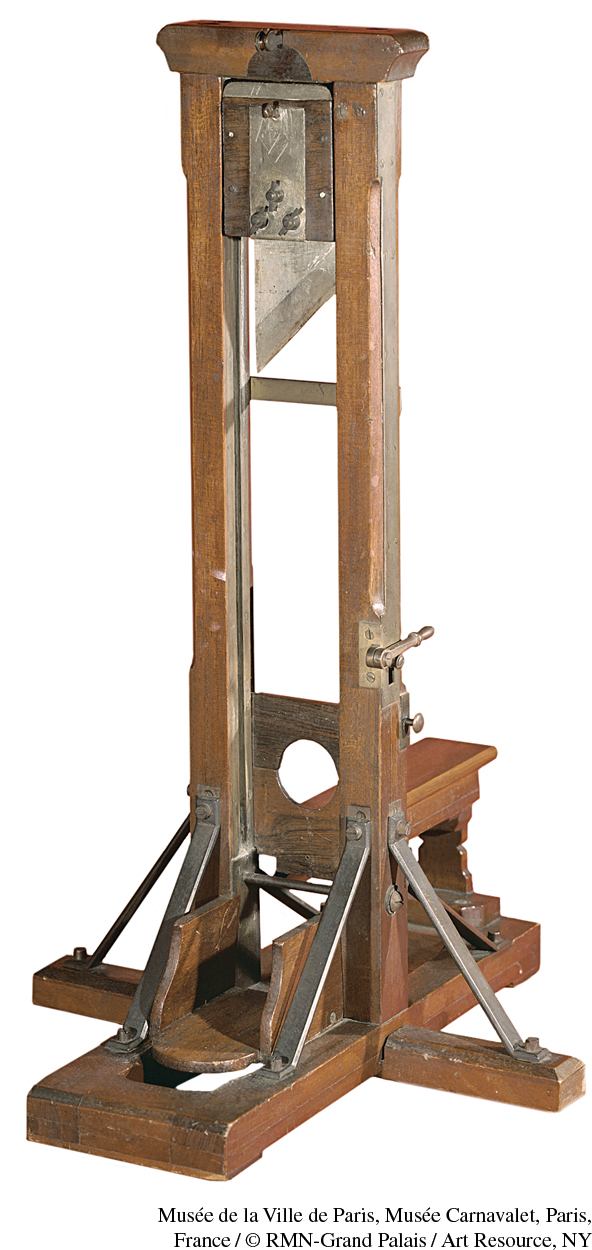
The Guillotine
Before 1789, only nobles were decapitated if condemned to death; commoners were usually hanged. Equalization of the death penalty was first proposed by J. I. Guillotin, a professor of anatomy and a deputy in the National Assembly. He also suggested that a mechanical device be constructed for decapitation, leading to the instrument’s association with his name. The Assembly decreed decapitation as the death penalty in June 1791 and another physician, A. Louis, actually invented the guillotine. The executioner pulled up the blade by a cord and then released it. Use of the guillotine began in April 1792 and did not end until 1981, when the French government abolished the death penalty. The guillotine fascinated as much as it repelled. Reproduced in miniature, painted onto snuffboxes and china, worn as jewelry, and even serving as a toy, the guillotine became a part of popular culture. How could the guillotine be simultaneously celebrated as the people’s avenger by supporters of the Revolution and vilified as the preeminent symbol of the Terror by opponents? (Musée de la Ville de Paris, Musée Carnavalet, Paris, France / © RMN-Grand Palais / Art Resource, NY.)
The execution of the king did not solve the new regime’s problems. The continuing war required even more men and money, and the introduction of a national draft provoked massive resistance. In response to growing pressures, the National Convention named a Committee of Public Safety to supervise food distribution, direct the war effort, and root out counterrevolutionaries. The leader of the committee, Maximilien Robespierre (1758–1794), wanted to go beyond these stopgap measures and create a “republic of virtue,” in which the government would teach, or force, citizens to become virtuous republicans through a massive program of political reeducation. Thus began the Terror, in which the guillotine became the most terrifying instrument of a government that suppressed almost every form of dissent.
